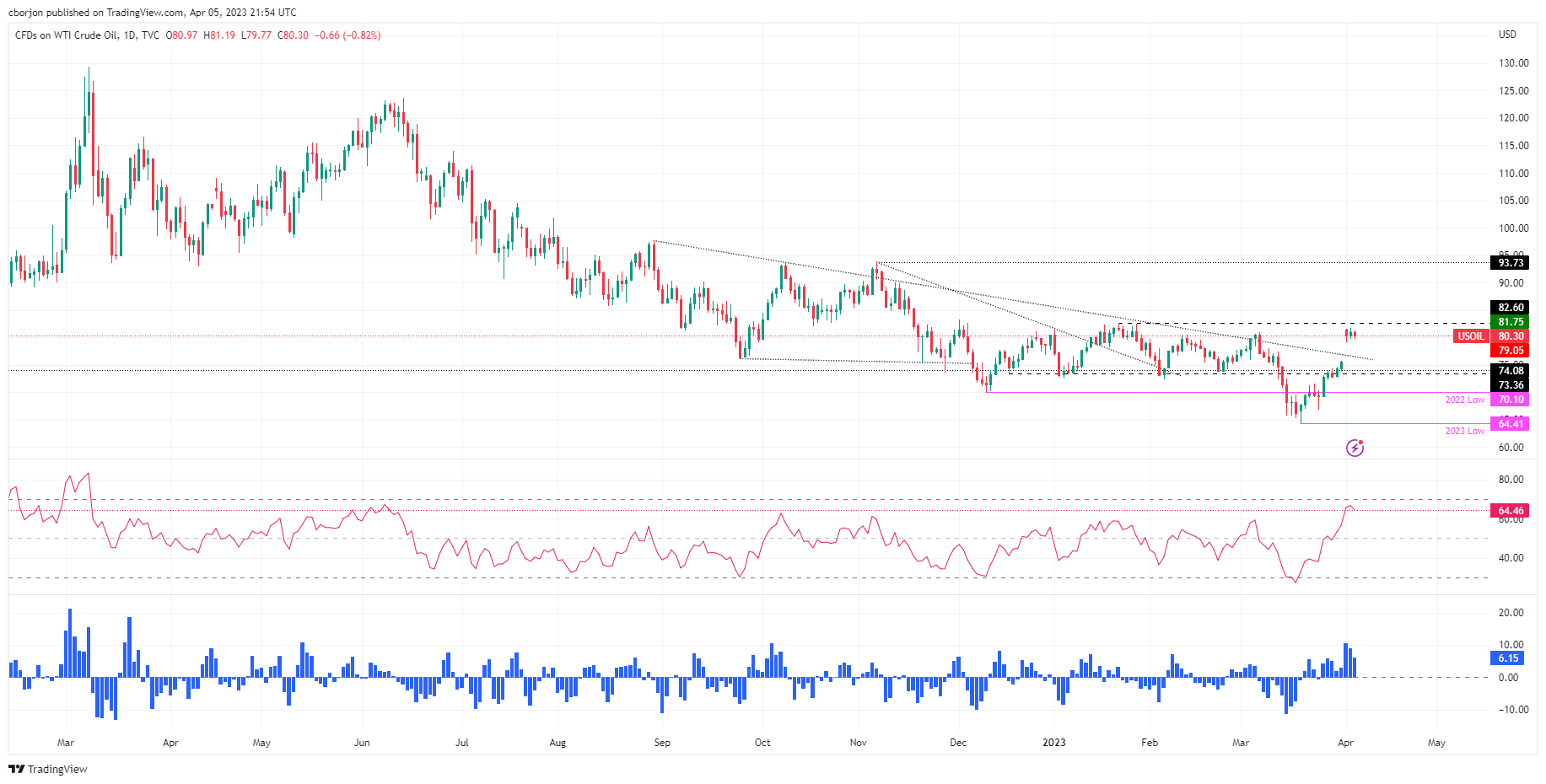- WTI retreats to $80.00 PB as the US Dollar advanced
Notícias do Mercado
WTI retreats to $80.00 PB as the US Dollar advanced
- The US EIA reports a 3.7 million barrel drop in inventories, with gasoline and distillates falling even more than estimated.
- Global Manufacturing and Services PMIs suggest a potential economic slump, adding pressure to WTI prices.
Western Texas Intermediate (WTI), the US crude oil benchmark, retreats from weekly highs at $81.75 and drops on greater-than-expected reductions in US crude and fuel stockpiles. Investors’ speculations that a Fed pivot is likely to happen as recession fears grow turned flows towards the US Dollar. At the time of typing, WTI is trading at around $80.30.
US oil inventories decline, though failed to underpin WTI price
Data from the US Energy Information Administration (EIA) office showed that inventories fell by 3.7 million barrels. In comparison, gasoline and distillates dropped more than estimates by 4.1 million barrels and 3.6 million barrels, respectively.
US crude oil prices jumped over the weekend, highlighting the Organization of Petroleum Exporting Countries (OPEC) decision to cut output by 1 million barrels.
Also weighing on WTI price are the recent readings of Global Manufacturing and Services PMIs, indicating that the economy might slump worldwide.
The latest data in the United States (US) showed that business activity is slowing down while the labor market is catching up with the Fed’s cumulative tightening. Therefore, traders estimate a pause in the US central bank tightening campaign, with over a 50% chance of keeping rates unchanged.
Job openings in the US fell to their lowest in almost two years, according to the JOLTs report. The market participants focus on Thursday’s Initial Jobless Claims data, followed by Friday’s Nonfarm Payrolls.
WTI Technical Analysis

WTI remains braced to the $80.00 per barrel figure on sideways trading. Price action during the last week remains almost flat. The Relative Strength Index (RSI) persists in bullish territory and shifts flat. At the same time, the Rate of Change (RoC) portrays that buying pressure is waning. If WTI resumes upwards, the first resistance would be $81.00. A breach of the latter will expose the November 7 pivot high at $93.73. On the flip side, WTI’s would dip, towards $75.00, if sellers reclaim the $80.00 PB psychological level.